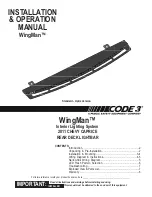
7. Electrical Installations
86
Chapter 7: Electrical Installations
7.1 Safety instructions
The installation of electrical devices in HOBBY's motor homes
has been carried out in accordance with the valid regulations
• Do not remove the signs on electrical components giving
safety instructions or danger warnings.
• The installation spaces around electrical equipment
such as distribution fuse boards, electric power supply,
etc., may not be used as additional storage spaces.
• Smoking and naked flame are forbidden when checking
electrical equipment.
• Only authorised specialists may work on the electrical
system.
• Inexpert handling of the vehicle‘s electrical system may
endanger your own life as well as that of others.
• To connect to an external 230 V mains connection,
use only a weather-proof, 3-wire extension cord with
a CEE plug and connector.
Advice and instructions
Important
• Any changes to the electrical installations may only be carried
out by a professional electrician.
• Disconnect the battery and switch off the 230V mains before
carrying out any maintenance work.
Batteries
• Please observe the battery manufacturer’s operating instructions.
• The acid in the battery is poisonous and corrosive. Avoid
contact with eyes and skin.
• The completely discharged battery must be recharged for at
least 24 hours. The battery may be damaged if it has been
discharged for more than 8 weeks.
• Avoid total discharge since this significantly reduces the perfor
-
mance capacity and service life of the batteries.
• Check the level of the battery fluid regularly (acid batteries);
AGM-batteries require no maintenance, but must be continuous
-
ly recharged.
• Check that the battery clamps are secure and remove any
layers of oxide.
7.2 Elements of the electrical system
















































